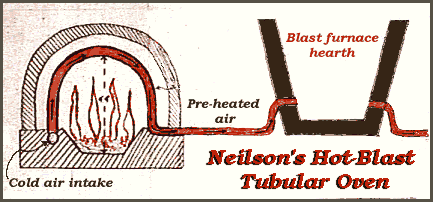
Upper Swansea Valley
The Story of Iron 3
by Len Ley
After the death of Richard Parsons, the works were taken over by his sons Richard and Samuel. They erected one small furnace to the north of the old one but did little else to expand the business. After a few years they got into financial difficulties and in 1817 they brought in David Thomas, a 23 year old engineer at the Neath Abbey Iron Works as Works Superintendent. Later that same year the brothers were declared bankrupt and after a couple of changes of proprietor the new controllers brought in George Crane from Bromsgrove as Works Manager.
Drawing by the late David Richards

David Thomas' early attempts to utilise anthracite or stone coal as it was then known, were only partially successful. The breakthrough came when Thomas saw the work of Scots engineer James Beaumont Neilson who patented the Hot-blast oven in 1829 which pre-heated the air blasted into the furnace, and saw that it could be adapted to burning local anthracite at Ynyscedwyn. After a visit to Scotland Thomas returned and constructed a hot-blast oven and connected it to a furnace at Ynyscedwyn. This system was first blown in February 1837 and proved an immediate success producing top grade iron at a competitive price. Thomas' developments came to the attention of the American iron industry and Thomas left to bring his new system to the anthracite fields of Pennsylvania.